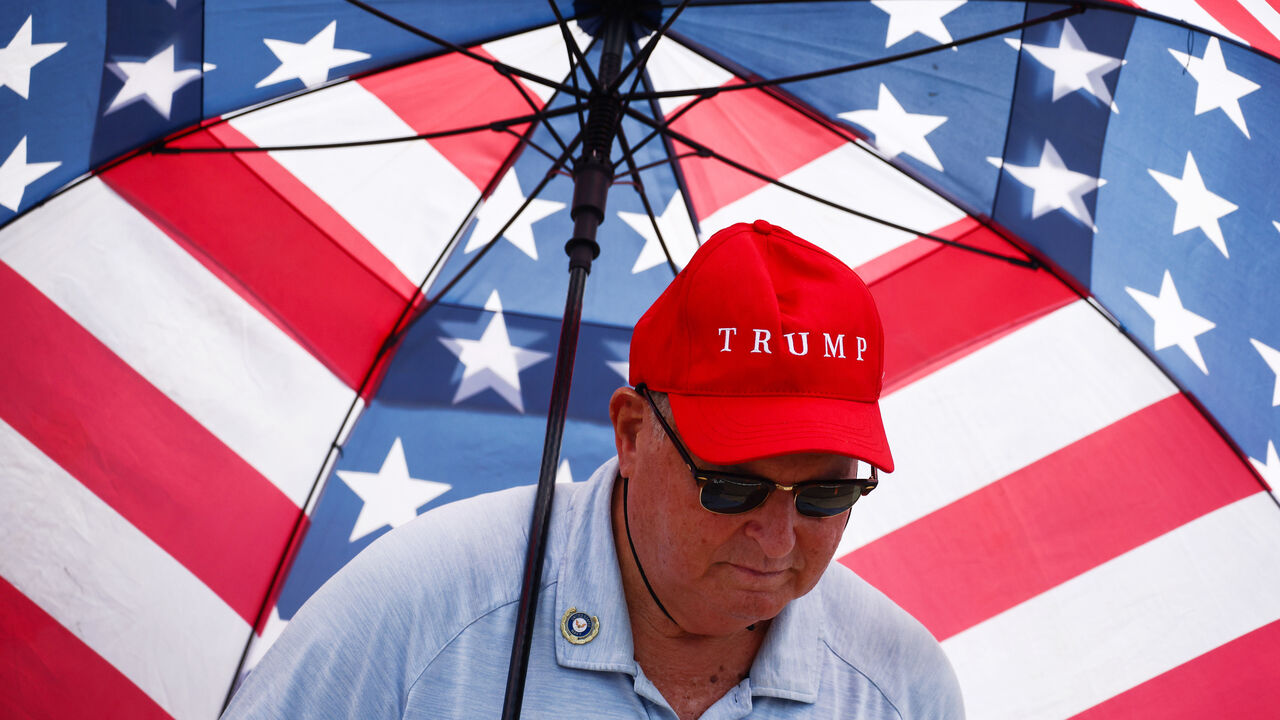Federal Reserve Board Federal Reserve Chairman Jerome Powell speaks during a news conference following a Federal Open Market Committee meeting in Washington on November 07, 2024 in Washington, DC.
Kent Nishimura | Getty Images
Federal Reserve Chair Jerome Powell dodged question after question at his Thursday news conference from a press corps eager to elicit the central bank leader’s thoughts about President-elect Donald Trump.
At some point, though, Fed policymakers, economists and analysts will need to account for what likely will be an ambitious economic — not to mention political — agenda from the firebrand Republican.
Trump took a dim view of the Powell Fed during his first term in office, calling policymakers “boneheads” and once compared Powell to a golfer who couldn’t putt. Powell, who was nominated by Trump in Nov. 2017 and took office the following February, largely shrugged off the criticism then, and he again deflected Thursday.
“I’m not going to get into any of the political things here today, but thank you,” Powell said during the news conference after being asked at least half a dozen times about the Trump victory and its ramifications. Powell cut the session short around 3:12 p.m. ET, a few minutes earlier than normal following the round of politics-heavy questioning.
However, dealing with the ramifications of a Trump presidency will be almost unavoidable for the Fed leader.
Among the expected policy initiatives on the way are steep tax cuts, expansionary government spending and aggressive tariffs aimed at leveling a global playing field. Trump also has threatened mass deportations for undocumented immigrants, something that could alter the labor market landscape.
How the Trump-Powell relationship unfolds this time is unclear — Powell’s term as chair is up in February 2026 — but it is likely to add another wrinkle into a delicate balance the Fed is trying to navigate with monetary policy.
Differences in policies, politics
“They’re going to get themselves in a bind here, because the communication is going to get much more difficult, and there’s going to be a new administration coming in with its own way of how to view policy,” said Joseph LaVorgna, chief economist at SMBC Nikko Securities.
“It’s not clear to me that that the Fed is going to have the same type of approach of what the [new] administration is doing, and that I think could set up a lot more tension,” he added.
LaVorgna has a unique perspective on the situation, having served as the chief economist for the National Economic Council under Trump. He could be headed back to Washington in 2025 for another stint in the White House.
Like Trump, LaVorgna has been a Fed critic, though for a seemingly opposite reason as thinks the central bank made a mistake Thursday in lowering its benchmark interest rate by a quarter percentage point. LaVorgna instead advocated the Fed hold off until it can get a clearer picture of a muddied economic landscape with uncertainty over the direction of inflation and unemployment.
Trump historically has favored lower rates, though that too could change if the Fed cuts and inflation rises.
“What if, going forward, the outlook becomes more mixed?” Lavorgna said. “To me, it was obvious they shouldn’t be cutting. And then President Trump I think [could] properly ask, ‘Why are you cutting when things [with inflation] actually don’t look as solid as they might have before?'”
Many economists think Trump’s policies could help stoke inflation at a time when signs are showing that, at least on a relative basis, the pace of price increases is easing back towards the Fed’s 2% target. Some of those economists already this week started marking up their inflation estimates and cutting their outlook for growth, despite a high level of uncertainty about what the Trump agenda will actually entail.
Should those forecasts come true and inflation perk up, the Fed will have no choice but to respond, possibly by slowing the pace of rate cuts or stopping altogether.
Uncertainty ahead
While Powell avoided Trump talk, Wall Street commentary following the Fed’s decision Thursday to lower rates by another quarter percentage point addressed the potential fallout.
“The upcoming year in Federal Reserve policy is going to be a remarkably interesting twelve months indeed,” wrote Joseph Brusuelas, chief economist at RSM.
In a forecast that is close to the Wall Street consensus as well as the fed funds futures market, Brusuelas expects the Fed to lop another full percentage point off baseline rates in 2025. But that outlook could be subject to change.
“This forecast is based on the economic status quo holding, all else being equal,” Brusuelas said. “Because we are entering an era of unorthodox economic populism, that forecast is subject to changes in both trade and immigration policy that could alter the path of employment, the unemployment rate and wage pressures that could cause an increase in the price level.”
While some economists worry that Trump’s policies could cause major fallout, others are taking a more measured approach given the incoming president’s penchant for saber rattling.
Despite implementing heavy tariffs that economists also feared would raise prices dramatically, inflation never topped 3% at any point during Trump’s term and in fact barely cracked 2% as judged by the Fed’s preferred indicator. Moreover, Biden kept Trump’s tariffs largely in place and even added some new ones on electric cars and other items.
Ultimately, the next round of tariffs could add about 0.3% to inflation, according to Nationwide Chief Economist, Kathy Bostjancic.
“We anticipate this should provide reason for the Fed to slow the rate of policy easing a bit, but not stop it,” she said. “Our call for substantive rate cuts over the next year would maintain the easing in financial market conditions that helps lower borrowing costs for consumers and businesses and continues to support the labor market and ongoing expansion.”
Still, the prospect of the Fed asserting its independence and moving policy in either direction, irrespective of Trump’s wishes, sets up a potential clash.
Trump previously has asserted that the president at least should be consulted on monetary policy. Fed officials, though, insist on independence from fiscal and political considerations, which could get tougher in the days ahead.
“The easy cuts have been made, and maybe December won’t be too contentious either,” said Elyse Ausenbaugh, head of investment strategy at J.P. Morgan Wealth Management. “Thereafter, I imagine the Fed is asking the same questions as investors – to what extent and when will the incoming Trump administration implement its campaign policy proposals?”

 Finance1 week ago
Finance1 week ago
 Personal Finance1 week ago
Personal Finance1 week ago
 Blog Post1 week ago
Blog Post1 week ago
 Personal Finance1 week ago
Personal Finance1 week ago
 Economics1 week ago
Economics1 week ago
 Economics5 days ago
Economics5 days ago
 Economics1 week ago
Economics1 week ago
 Accounting4 days ago
Accounting4 days ago























